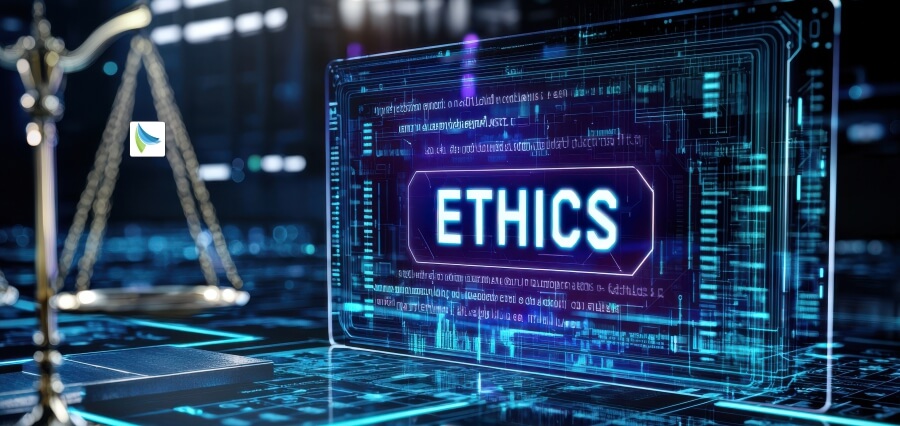In today’s fast-evolving business landscape, Chief People Officers (CPOs) face the dual challenge of managing an increasingly complex workforce while ensuring that their organizations remain competitive and agile. Technology has become a key enabler in this transformation, offering innovative solutions that streamline HR functions, enhance decision-making, and improve employee experience. This article offers insights on the intersection of HR and technology, focusing on the tools and systems that are driving this transformation.
Artificial Intelligence (AI) and Machine Learning:
AI tools can analyze resumes, social media profiles, and other data sources to identify the best candidates for a position. Using natural language processing (NLP) and machine learning algorithms, these tools can quickly evaluate hundreds or even thousands of resumes and rank them based on how well they match the job description. This minimizes human bias and ensures a more objective, efficient screening process.
Using natural language processing (NLP) and sentiment analysis, AI tools can analyze employee feedback from surveys, emails, or even informal communication platforms to gauge the overall mood and satisfaction of the workforce. By understanding the emotional tone of employee communications, HR can proactively address concerns, improve morale, and implement targeted retention strategies.
AI-driven systems can automate payroll processing, benefits administration, and tax calculations, reducing the risk of human error and ensuring compliance with legal and regulatory requirements. This automation not only improves efficiency but also ensures that employees receive accurate and timely compensation.
AI-powered tools can track employee attendance and time-off requests, allowing for better management of vacation days, sick leave, and remote work hours. These tools can automatically adjust schedules based on employee preferences or team needs, making the management of work hours more efficient and flexible.
Human Resource Information Systems:
HRIS centralizes employee records, making it easier to track and manage employee data such as personal information, job history, compensation, and performance. With cloud-based HRIS solutions, HR professionals can access this data in real time, making it easier to update, retrieve, and analyze records without having to sift through physical files.
Staying compliant with labor laws, tax regulations, and industry standards is a critical responsibility for HR departments. HRIS platforms simplify compliance by automatically updating legal changes, tracking mandatory training, and generating reports required for audits. This helps organizations avoid costly penalties and ensures that HR professionals can focus on strategic rather than regulatory concerns.
HRIS systems offer powerful reporting and analytics capabilities that help HR teams identify trends, gaps, and opportunities within the workforce. For example, HR professionals can analyze employee turnover rates, engagement levels, and training outcomes to assess the effectiveness of HR initiatives. This data-driven approach enables HR to make decisions that are aligned with the organization’s strategic objectives and optimize talent management practices.
HRIS platforms provide insights into workforce demographics, skills, and performance, enabling HR to plan for the future. By analyzing current and future talent needs, HR can develop succession plans and workforce strategies that ensure the right talent is in place to meet business goals. This data also helps identify skill gaps, allowing organizations to invest in targeted training programs or recruit externally when necessary.
Employee Experience Platforms:
One of the most critical points in an employee’s journey is onboarding. EXPs allow HR teams to create personalized onboarding experiences that go beyond the traditional paper-based approach. New hires can complete forms, access company resources, and receive training tailored to their role, team, and department, all through an integrated digital platform. This personalized experience helps employees feel welcome, prepared, and engaged from day one, which can lead to higher employee retention rates.
EXPs offer integrated tools to manage remote work more effectively, such as virtual collaboration tools, time tracking, project management systems, and digital recognition platforms. These tools make it easier for employees to work from home or other locations while staying connected with colleagues and managers. This promotes a flexible work culture, where employees can balance their personal and professional lives more effectively.
EXPs allow HR teams to monitor and support work-life balance initiatives. For example, they can track employee workloads, offer resources for stress management, and provide employees with tools to manage their schedules more effectively. This helps create a healthier work environment, particularly in remote and hybrid settings where boundaries between work and personal life can sometimes blur.
Learning Management Systems (LMS):
An LMS serves as a centralized repository for all training materials, resources, and certifications. HR departments can upload courses, training documents, videos, and assessments, making them easily accessible to employees across various departments and locations. This centralization eliminates the need for manual distribution of materials, ensures consistency in training delivery, and reduces logistical overhead.
LMS platforms support self-paced learning, allowing employees to take courses when it’s most convenient for them. This flexibility ensures that employees can access learning opportunities without disrupting their work schedules. Whether employees are in the office or working remotely, they can complete courses on their own time, which promotes better engagement and retention of knowledge.
With an LMS, learning is no longer seen as a one-time event but as a continuous process. HR can regularly offer new courses, webinars, and resources that employees can access at any time. This supports a culture of lifelong learning, where employees are motivated to upskill themselves and stay relevant in their roles.
To further encourage participation and engagement, many modern LMS platforms include gamification features, such as badges, leaderboards, and achievements. These elements make learning more interactive and enjoyable, motivating employees to complete courses and participate in training programs. Additionally, many LMS platforms allow for social learning through discussion forums, peer reviews, and collaborative projects, which enhances knowledge sharing and teamwork.
Conclusion:
The integration of advanced technologies such as AI, HRIS, EXPs, and Learning Management Systems (LMS) is transforming HR from a traditional administrative function to a strategic powerhouse that drives business growth. Leveraging these technologies not only automate and streamline routine tasks but also provide valuable insights that help HR leaders make informed, data-driven decisions. By adopting these solutions, CPOs can enhance recruitment processes, improve employee engagement, foster continuous learning, and create a more flexible, inclusive workplace.
Read Also: The Chief People Officer’s Guide to Building a High-Performance Culture












